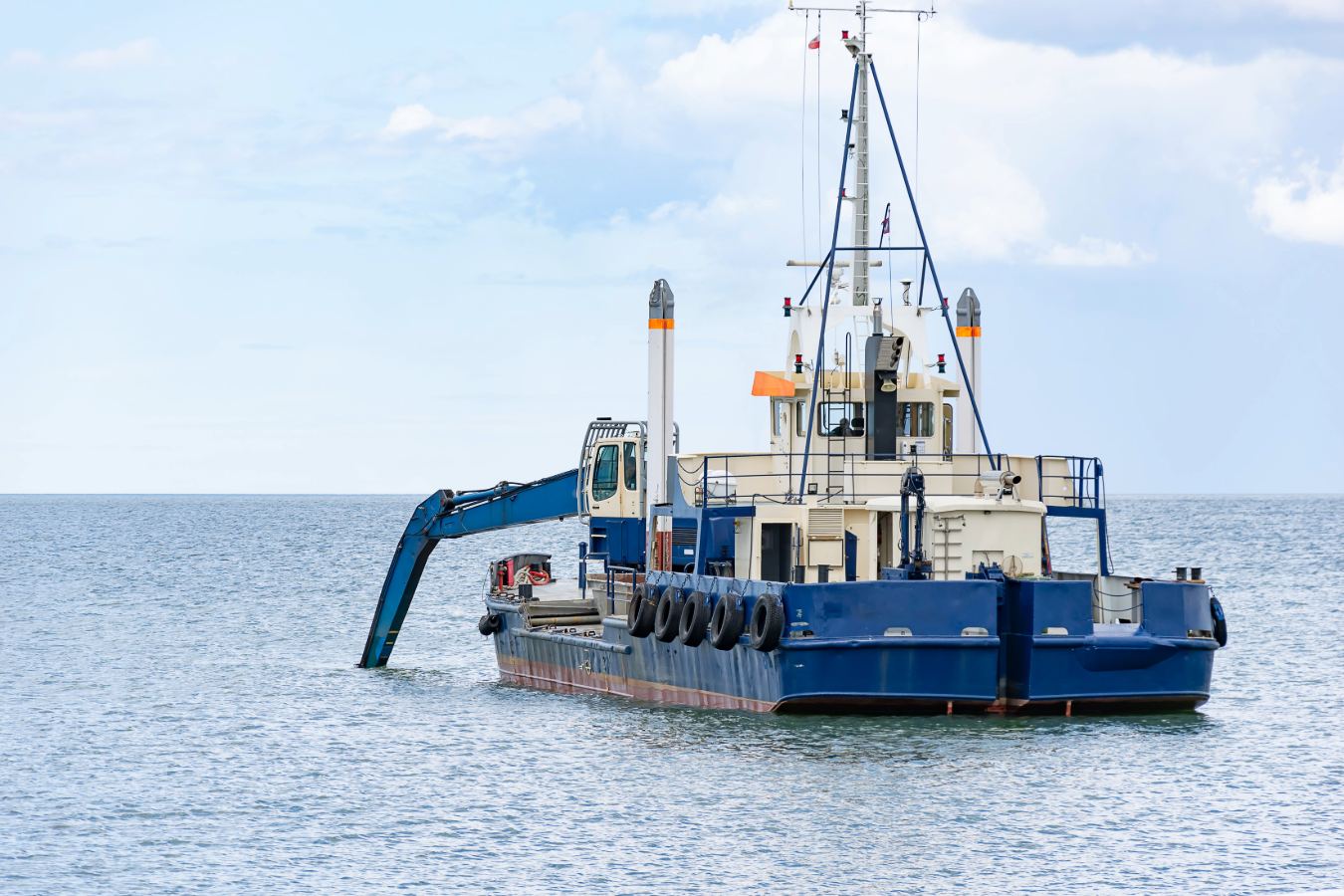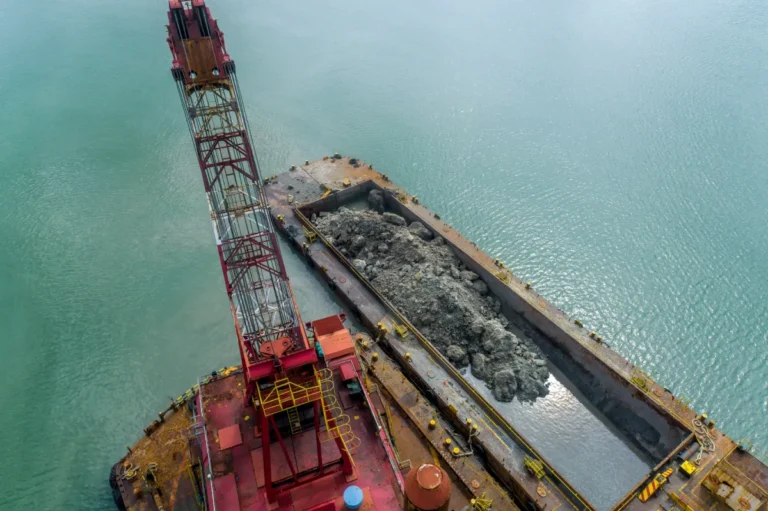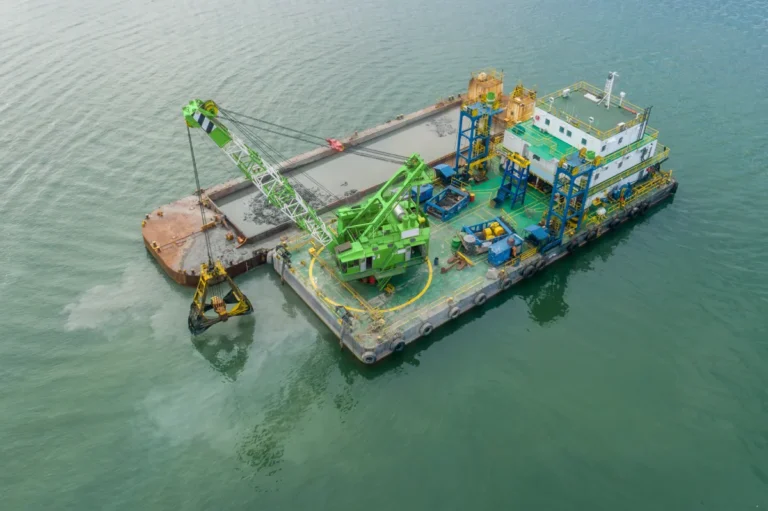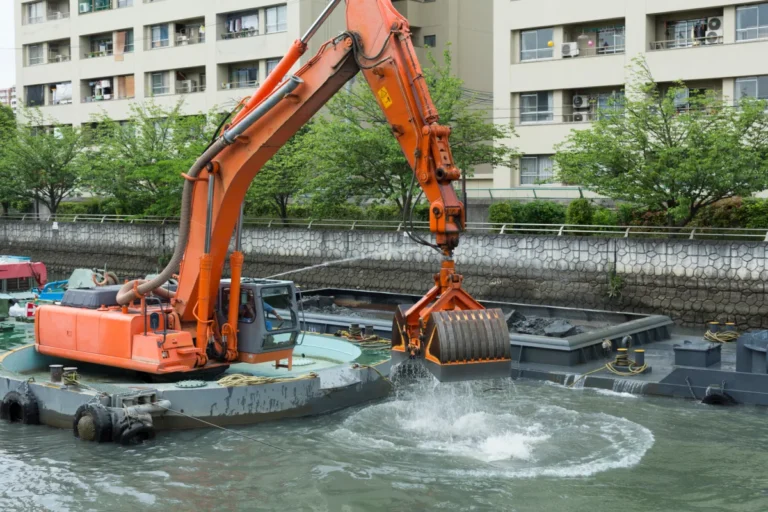Shallow water dredging has traditionally posed significant challenges, as restricted access, environmental sensitivity, and high operational costs often limit the effectiveness of conventional dredging methods. However, the advent of the excavator dredge attachment has transformed how contractors and municipalities approach sediment removal in lakes, ponds, and other confined water bodies. By combining the power of an excavator dredge pump with the mobility of a standard or long-reach excavator, this attachment offers a compact, cost-effective solution that integrates seamlessly with modern lake dredging equipment systems, delivering both precision and performance in even the most demanding shallow water conditions.
Understanding the Excavator Dredge Attachment
An excavator dredge attachment is a specialized tool designed to convert a standard or long-reach excavator into a high-efficiency dredging machine, capable of pumping sediment, sludge, and solids directly from the waterbed. Instead of relying on conventional digging methods, this attachment enables continuous material removal through a powerful pump system integrated into the excavator’s boom.
At the core of the system is the excavator dredge pump, a heavy-duty, hydraulic-powered pump that handles high-viscosity slurries and abrasive solids with ease. Connected to the pump is a suction head, often fitted with jetting rings or cutters to loosen compacted sediment, along with a discharge hose that transports the material to a remote dewatering or containment site. These components work together to ensure efficient and uninterrupted dredging operations, even in challenging environments such as shallow lakes and retention ponds.
The excavator dredge attachment is engineered for seamless integration with both standard and long-reach excavators, offering the flexibility to work from shorelines, temporary pads, or shallow platforms. This makes it especially effective in lake dredging equipment setups where floating dredges are impractical or too costly to deploy.
Unlike traditional buckets that scoop and dump sediment, the dredge attachment enables continuous suction dredging, eliminating the repetitive cycle of excavation and material transfer. This leads to faster project completion, reduced labor costs, and minimized environmental disruption, making the excavator dredge attachment a game-changing solution for shallow water dredging applications.
Shallow Water Dredging Challenges and Limitations
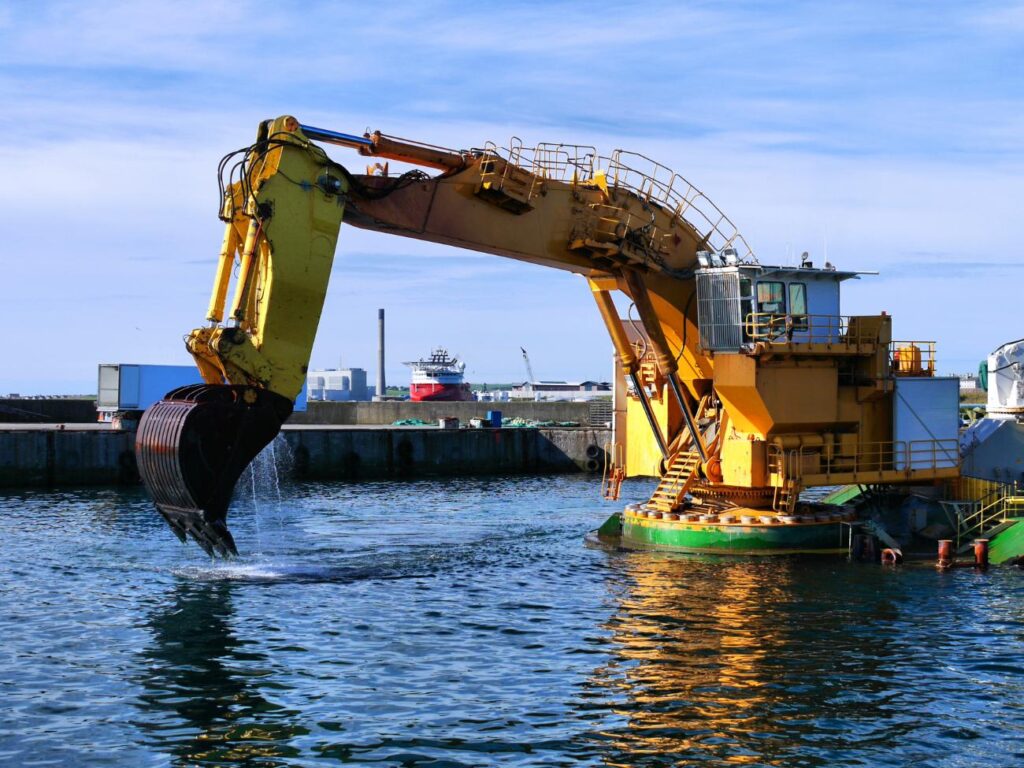
Shallow water environments present a unique set of challenges that can complicate traditional dredging methods. Restricted access for large floating dredgers is one of the most common obstacles to overcome. In lakes, marshes, and stormwater retention ponds, space constraints, unstable banks, and limited water depth make it difficult—if not impossible—for barge-mounted or cutterhead dredgers to operate efficiently. These conditions often require alternative methods that offer precision, mobility, and minimal setup time.
Another concern is the potential for environmental disruption and sediment disturbance. Large-scale dredging equipment can generate excessive turbidity, which negatively impacts aquatic ecosystems, especially in delicate environments such as wetlands or shallow lakes. In contrast, a properly configured excavator dredge attachment enables more controlled sediment removal, thereby reducing the ecological footprint while achieving high-performance results.
High labor and equipment costs also factor heavily into shallow water dredging projects. Traditional dredging operations often require multiple machines, crews, and support vessels, which drive up both project budgets and timelines. By integrating a powerful excavator dredge pump directly into an excavator, contractors can significantly reduce workforce and equipment needs without sacrificing efficiency.
Finally, limited mobility in confined areas such as marshes or narrow inlets restricts the practicality of large dredging systems. These environments require a more flexible and agile solution. This is where lake dredging equipment paired with an excavator dredge attachment becomes ideal, offering the reach, precision, and transportability necessary to handle shallow water projects safely and effectively.
Why the Excavator Dredge Attachment Excels in Shallow Environments
The excavator dredge attachment is purpose-built to overcome the limitations of shallow water dredging, offering unmatched flexibility and performance in environments where traditional dredging methods struggle. One of its biggest advantages is the ability to operate directly from the shoreline or shallow platforms, eliminating the need to launch floating equipment into areas with limited depth or poor accessibility. This setup reduces the risks associated with deploying personnel or machinery into unstable or submerged terrain.
By working from land, the excavator dredge attachment reduces the need for support vessels and floating barges, which are typically required in conventional dredging operations. This streamlined approach significantly lowers setup and mobilization costs while simplifying logistics, making it an ideal solution for remote sites or short-duration projects.
In addition to its logistical benefits, the attachment is designed to operate efficiently in confined or environmentally sensitive areas. Its ability to target sediment precisely—using a hydraulic-powered excavator dredge pump—minimizes disturbance to surrounding habitats and water quality. This makes it particularly valuable in protected wetland areas, small lakes, and stormwater management ponds where ecosystem preservation is critical.
Because of its adaptability and efficiency, the excavator dredge attachment is widely used in conjunction with modern lake dredging equipment. It provides contractors and municipalities with a powerful, cost-effective tool for restoring water depth, removing silt and algae buildup, and maintaining aquatic infrastructure without the burden of large-scale, invasive equipment.
Excavator Dredge Pump: The Heart of the System
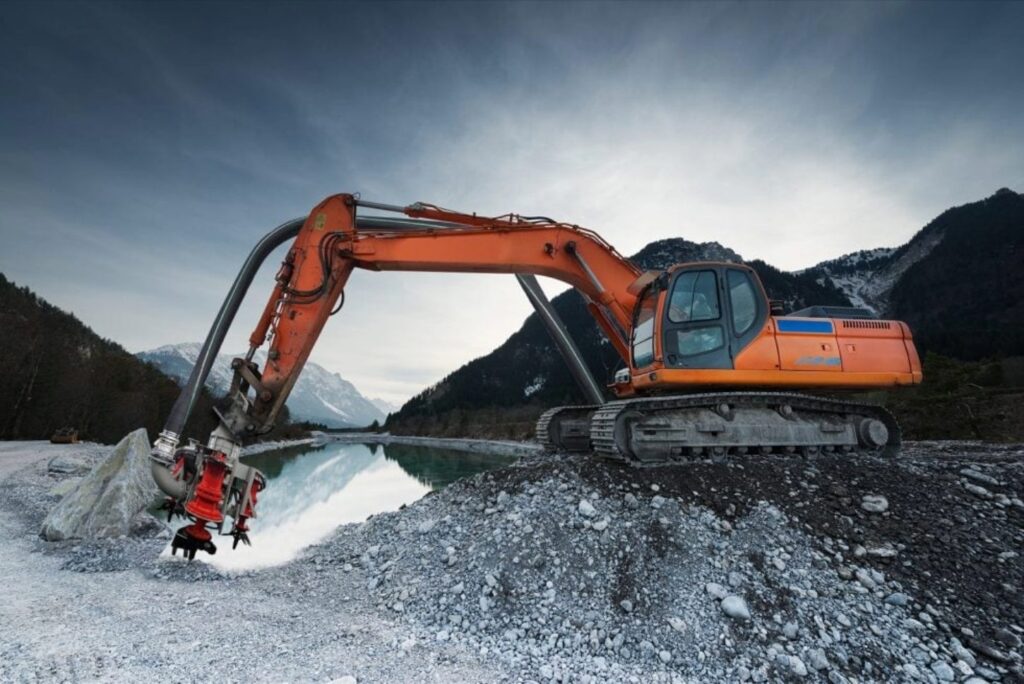
At the core of any efficient excavator dredge attachment is the excavator dredge pump, a hydraulic-powered, high-solids pump specifically designed for moving abrasive and viscous slurries. Unlike standard centrifugal pumps, these dredge pumps are engineered to handle high concentrations of solids, making them ideal for removing sediment, silt, mud, sand, and debris from lakes, ponds, and other shallow water environments.
The performance of the excavator dredge pump is defined by key metrics, including flow rate, vertical lift (head pressure), and the maximum particle size it can handle. Depending on the model and the excavator’s hydraulic output, these pumps can deliver high volumes of material over long distances and through varying elevations. This ensures fast material transport to shore-based dewatering systems or spoil areas—an essential capability in remote lake dredging equipment setups where discharge points are often far from the suction site.
One of the most notable advantages is the continuous pumping process, which significantly outperforms mechanical digging methods. Rather than lifting and dumping material in batches, the dredge pump creates a constant flow of sediment-laden slurry. This results in higher productivity, reduced manual labor, and a more controlled dredging operation with lower turbidity.
The pump’s design also allows it to handle a variety of sediment types found in lakes and ponds, including soft organic sludge, packed clay, sand deposits, and even small gravel. With its ability to maintain efficiency in challenging material conditions, the excavator dredge pump enables the attachment to perform reliably in a wide range of lake dredging equipment applications, making it the most critical component of the system.
Lake Dredging Equipment Integration
The excavator dredge attachment plays a critical role in enhancing the overall performance of modern lake dredging equipment systems. When combined with other tools such as geotextile dewatering bags, booster pumps, and mobile filtration units, it creates a complete and highly efficient sediment removal and processing solution. The hydraulic-powered excavator dredge pump delivers a continuous flow of slurry, making it easy to direct the material into dewatering systems for immediate separation and containment.
Proper pipeline and hose routing for shallow water discharge is essential for maintaining flow efficiency and minimizing backpressure. The excavator-mounted setup enables operators to control hose orientation from the cab, allowing for clean and targeted discharge even in tight or sensitive shoreline zones. This flexibility ensures consistent sediment transfer from the dredging site to onshore containment areas, eliminating the need for frequent adjustments or disruptions.
In lake environments, sediment containment and processing are often a major concern, especially when working with fine silt, algae, or nutrient-rich organic matter. The excavator dredge attachment supports controlled pumping to geotextile tubes, silt curtains, or lined drying basins, helping mitigate sediment migration and improve environmental outcomes.
This integration of the excavator dredge system with other lake dredging equipment is especially effective in lake restoration, algae removal, and long-term sediment control. Whether revitalizing a recreational lake, clearing silt from stormwater ponds, or managing nutrient load in drinking water reservoirs, the combined approach improves project efficiency, minimizes ecological disruption, and extends the service life of the water body.
Key Performance Metrics to Evaluate
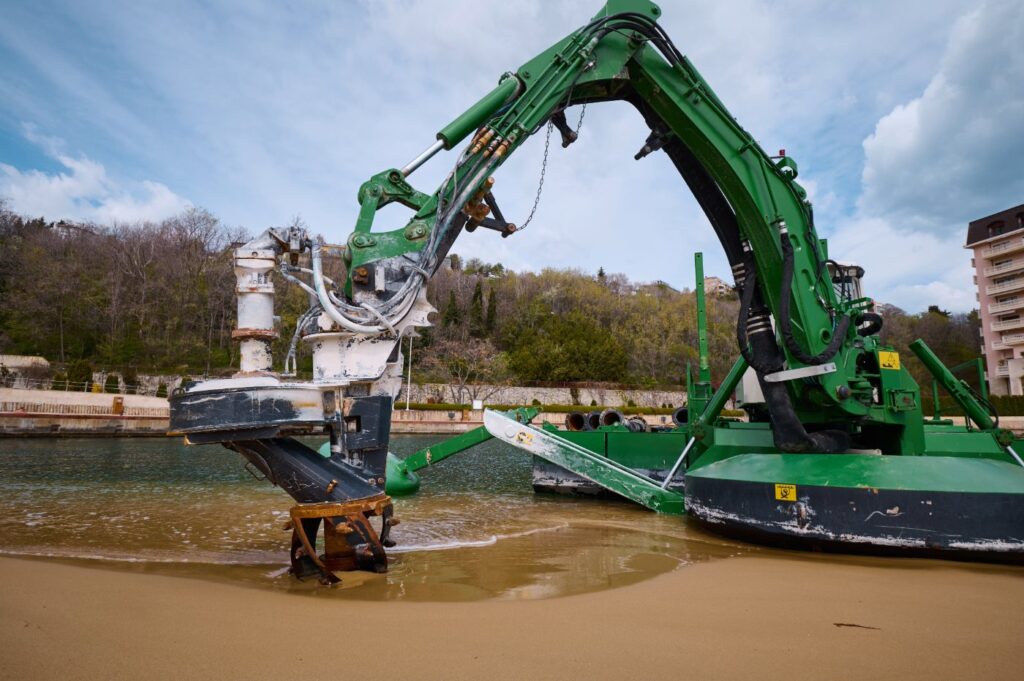
When selecting an excavator dredge attachment for shallow water operations, it’s essential to evaluate key performance metrics that directly impact productivity, compatibility, and operational efficiency. One of the most critical factors is the pump capacity and hydraulic requirements. The hydraulic-powered excavator dredge pump must be matched to the excavator’s flow and pressure specifications to ensure optimal material throughput without overloading the system. Ensuring the excavator can deliver sufficient hydraulic power is key to maintaining steady slurry output, especially in lake dredging scenarios.
Another important metric is the maximum dredging depth and reach. Depending on the application—whether it’s dredging shorelines, retention ponds, or deeper lakebeds—the attachment must provide sufficient vertical and horizontal access. Long-reach excavators paired with deep-dredging pumps can extend capabilities well beyond traditional setups, enabling efficient sediment removal across wide, shallow water zones.
Choosing the right suction head option is also vital. For light-duty jobs in soft sediment, a jetting ring may provide enough agitation. For compacted or coarse material, a cutterhead-equipped excavator dredge attachment delivers better penetration and material breakup, enhancing overall pump performance in challenging lakebed conditions.
Lastly, evaluate the discharge length and booster pump compatibility. Projects with long pipeline routes or elevation changes may require booster pumps to maintain flow efficiency. Verifying that your lake dredging equipment setup, including discharge hoses and containment systems, is compatible with your pump’s output ensures smooth, uninterrupted operation. These performance metrics collectively determine how well the system handles material volume, transport distance, and the unique challenges of each dredging site.
Efficiency and ROI Advantages
The excavator dredge attachment offers a range of efficiency and ROI benefits that make it an attractive solution for contractors and municipalities working in shallow water environments. One of the most immediate advantages is the faster setup and takedown times. Unlike traditional dredging systems that require barges, cranes, and multiple support vessels, the excavator-mounted setup can be quickly deployed using a single machine. This streamlined process significantly reduces project startup time, allowing teams to begin dredging operations sooner.
Additionally, the attachment contributes to a reduced equipment footprint and lower transport costs. Since the dredge pump and all associated components are mounted on the excavator itself, there is no need to mobilize large floating platforms or auxiliary equipment. This compact setup is especially advantageous for remote or hard-to-access lake dredging equipment jobs where transport logistics can be a challenge.
Another key benefit is minimal environmental disruption. With the precision of the excavator dredge pump, operators can target specific sediment layers while working from stable ground or shallow platforms. This approach helps preserve aquatic habitats, reduce turbidity, and comply with environmental regulations, making the equipment ideal for sensitive wetland or conservation zones.
Finally, the system’s simplicity and reliability allow for high-frequency deployment across multiple shallow sites. Whether moving from pond to pond or servicing various lakefront properties, the excavator dredge attachment provides the flexibility and speed needed for quick turnaround and consistent project delivery. This versatility translates into stronger long-term ROI and better resource utilization across a wide range of dredging applications.
Best Practices for Shallow Water Operation
Successful use of an excavator dredge attachment in shallow water requires strategic planning and adherence to operational best practices. Start with proper positioning and approach for shoreline dredging—ensure the excavator is placed on stable ground with a clear line of reach into the water. For narrow banks or soft terrain, use mats or temporary platforms to maintain machine stability while minimizing disturbance to the shoreline and surrounding area.
Before beginning, conduct a sediment type assessment to determine the most suitable excavator dredge pump configuration. Fine silt, clay, and organic sludge may require a jetting ring for agitation, whereas denser or compacted materials, such as sand and gravel, benefit from a cutterhead setup. Matching the pump type to the sediment ensures efficient suction and continuous material flow, which is especially important in sensitive lake dredging environments.
To prevent downtime and maintain performance, perform daily inspections and maintenance on the dredge pump, suction head, and discharge hoses. Check for wear, clogs, leaks, and ensure the hydraulic fluid levels are correct. Flushing the system with clean water after each use helps extend pump life and reduces the risk of sediment buildup.
Equally important is operator training and adherence to safety procedures. Ensure that all personnel understand how to operate the excavator dredge attachment, monitor system pressure, and respond to clogs or overload conditions. Emphasize safe working distances, emergency shutdown protocols, and environmental compliance when working in lakes, ponds, or other regulated water bodies. These best practices promote both efficiency and operational safety in shallow dredging applications.
When to Use an Excavator-Mounted System vs. Traditional Dredgers
Choosing between an excavator dredge attachment and a traditional dredging system depends on project conditions, budget, and mobility requirements. For jobs involving lakes, ponds, and stormwater basins, especially those with shallow water levels or restricted access, an excavator-mounted system is often the superior choice. The ability to operate from shore eliminates the need for launching vessels, making it easier and faster to start work in confined or residential zones.
Pontoon and barge-mounted dredgers have their place in large-scale or deep-water projects, but they come with limitations in shallow or remote areas. These systems often require extensive mobilization, deeper draft for operation, and support crews to manage transport, anchoring, and positioning. In contrast, the excavator dredge attachment paired with a high-performance excavator dredge pump is far more agile, capable of working in just a few feet of water while delivering consistent dredging performance.
For smaller dredging contractors, the cost-benefit analysis strongly favors the excavator-mounted setup. It reduces capital investment, lowers transport and labor costs, and allows a single operator to manage both excavation and pumping. The simplified logistics also mean fewer permits and faster job completion, especially when working with lake dredging equipment on time-sensitive restoration or maintenance projects.
This system is also ideal for rental fleets and portable jobsite work, offering flexibility across multiple projects without the burden of large, permanent dredging infrastructure. Contractors can quickly adapt to new sites, scale operations as needed, and meet diverse dredging demands with a single machine, making the excavator dredge attachment a practical and scalable solution across various industries.
Future-Proofing Your Dredging Fleet
Modern dredging operations demand more than raw power—they require precision, compliance, and adaptability. The excavator dredge attachment is uniquely positioned to meet these evolving standards, offering advanced compatibility with automation and GPS control systems. When integrated with RTK GPS or 3D dredging software, operators gain real-time data on dredge depth, positioning, and material volumes, allowing for highly accurate and repeatable results. This level of control is especially valuable in regulated zones and sensitive environments, such as those managed with lake dredging equipment.
As environmental regulations become increasingly stringent, having a dredging system that supports adaptability to new sediment removal guidelines is crucial. The excavator dredge pump enables controlled slurry flow, reducing turbidity and sediment resuspension. This makes it easier to stay compliant with discharge limits, sediment containment rules, and habitat protection mandates—requirements that are increasingly common in municipal and federally funded restoration projects.
In terms of investment, the system offers a strong long-term return on investment (ROI) for municipalities, environmental agencies, and private contractors. Its modular design, minimal maintenance requirements, and multi-site usability make it a cost-effective tool for recurring dredging needs. Whether used seasonally or year-round, the excavator-mounted setup helps organizations meet their maintenance goals while controlling operational budgets.
The growing role of excavator dredge attachments in sustainable water management reflects a broader industry shift toward low-impact, high-efficiency solutions. With the ability to reduce equipment footprint, minimize fuel usage, and support localized sediment processing, these attachments are quickly becoming a key asset in environmentally conscious lake dredging equipment strategies.
Conclusion
As dredging demands continue to evolve toward smarter, more sustainable practices, the excavator dredge attachment stands out as a future-ready solution for managing shallow water sediments. Its adaptability, integration with automation and environmental controls, and proven efficiency make it an essential tool for anyone involved in waterway restoration, stormwater management, or lake maintenance. Whether you’re looking to reduce operational costs, improve project turnaround, or stay ahead of regulatory trends, investing in this attachment, alongside a reliable excavator dredge pump and complementary lake dredging equipment, ensures your dredging fleet is prepared for the challenges and opportunities ahead.


